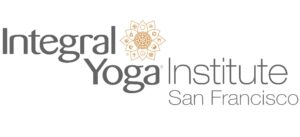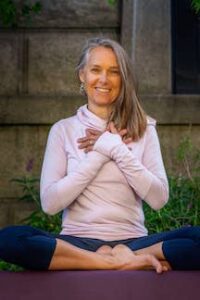by Claudia Bartsch
Yogic practitioners have known for thousands of years that breath control (pranayama) increases physical health and mental/emotional well-being. By now science has examined and validated this ancient knowledge: conscious, slow, diaphragmatic breathing has the power to move us from the sympathetic (stress response) to the parasympathetic (relaxation response) nervous system. Both are branches of the autonomic nervous system which was for a long time believed to be out of our direct control.
Conscious breathing opens the opportunity to take direct charge of our nervous system. As it orchestrates everything in our bodies, minds and emotions, it becomes an incredible powerful tool to take charge of our health and lives.
And yet, at times it seems tedious and boring to focus on the breath; it is something we do anyway, so why bother?
Because most of us have established over the years dysfunctional breathing patterns with which we literally reduce the amount of oxygen we take in at any given moment, which reduces the amount of prana, or life force, we take in. We just don’t live our lives to the fullest.
There are many reasons why this happens. For example, prolonged experiences of stress, trauma, anxieties or depression will change our breathing patterns. Or emotions that we don’t like to feel or don’t have the capacity to digest, are suppressed by altering the way we breathe. We don’t think about it—it happens unconsciously, initially to protect us.
Unfortunately this creates a negative vicious cycle: our history creates a certain pattern of breathing, and by getting stuck in it, we lock our stories, particularly the challenging and painful ones, into our breathing and ultimately into our bodies.
The good news is, that we can start creating awareness on how we breathe and practice new, healthier patterns. Initially emotions and memories might surface that we finally can deal with. Over time we can literally free ourselves, not just from dysfunctional breathing patterns, but also from old mental and emotional structures that don’t serve us anymore. This of course doesn’t happen overnight, it is a process that takes regular practice, determination, patience and persistence. But it can be done and can be one of the most rewarding experiences.
Please join us for a workshop on November 8th at 11.30. We will examine the anatomy of the breath more deeply, learn how to be more aware and conscious of the breath and how to alter it to support health, resilience and happiness.
Claudia Bartsch, E-500CYT, C-IAYT, has been teaching yoga for 17 years. With over 1,500 hours of training she offers an in-depth understanding of yogic practices and techniques and how to apply them for healing, integration and transformation. In 2011 she bridged her interest in Western psychology and the yogic path and became a certified Phoenix Rising Yoga Therapist. Additionally, Claudia is a certified Stress Management Educator and a trained Shiatsu Practitioner.
In her work she offers a unique blend of the various branches of yoga, hands-on body and energy work empowering her clients to move towards greater resilience, well-being and health.
Please visit her website for more information: http://claudiabartsch.com


